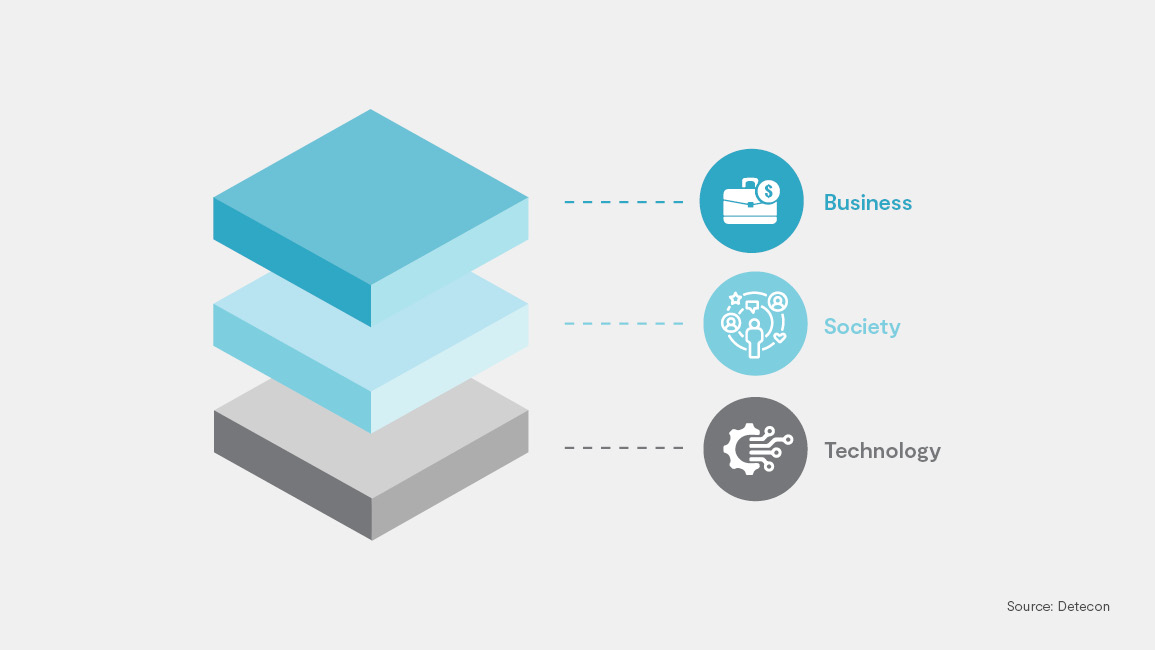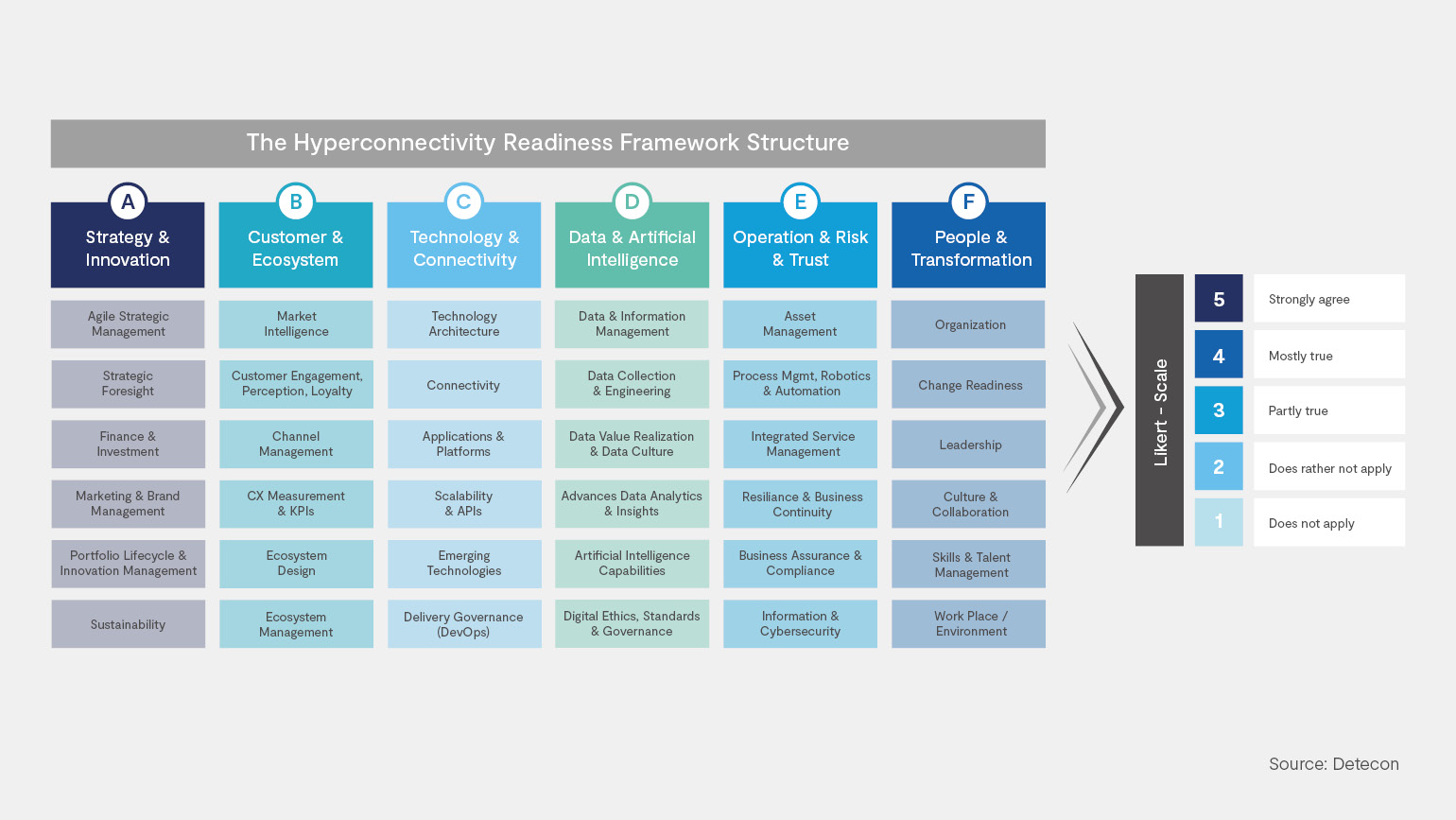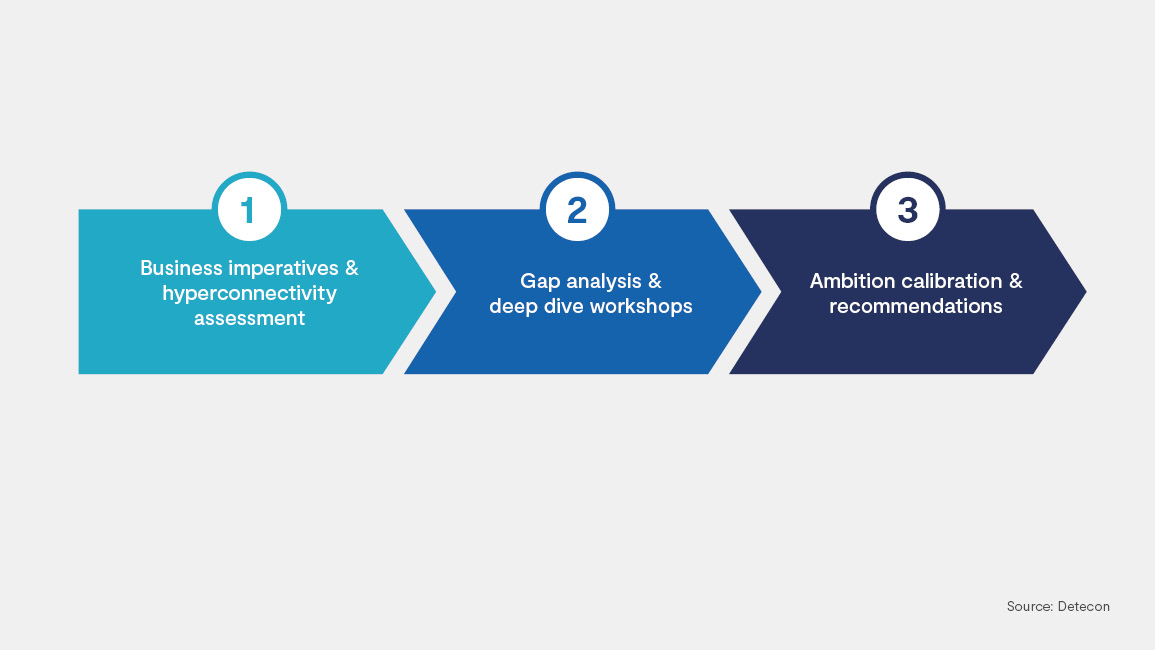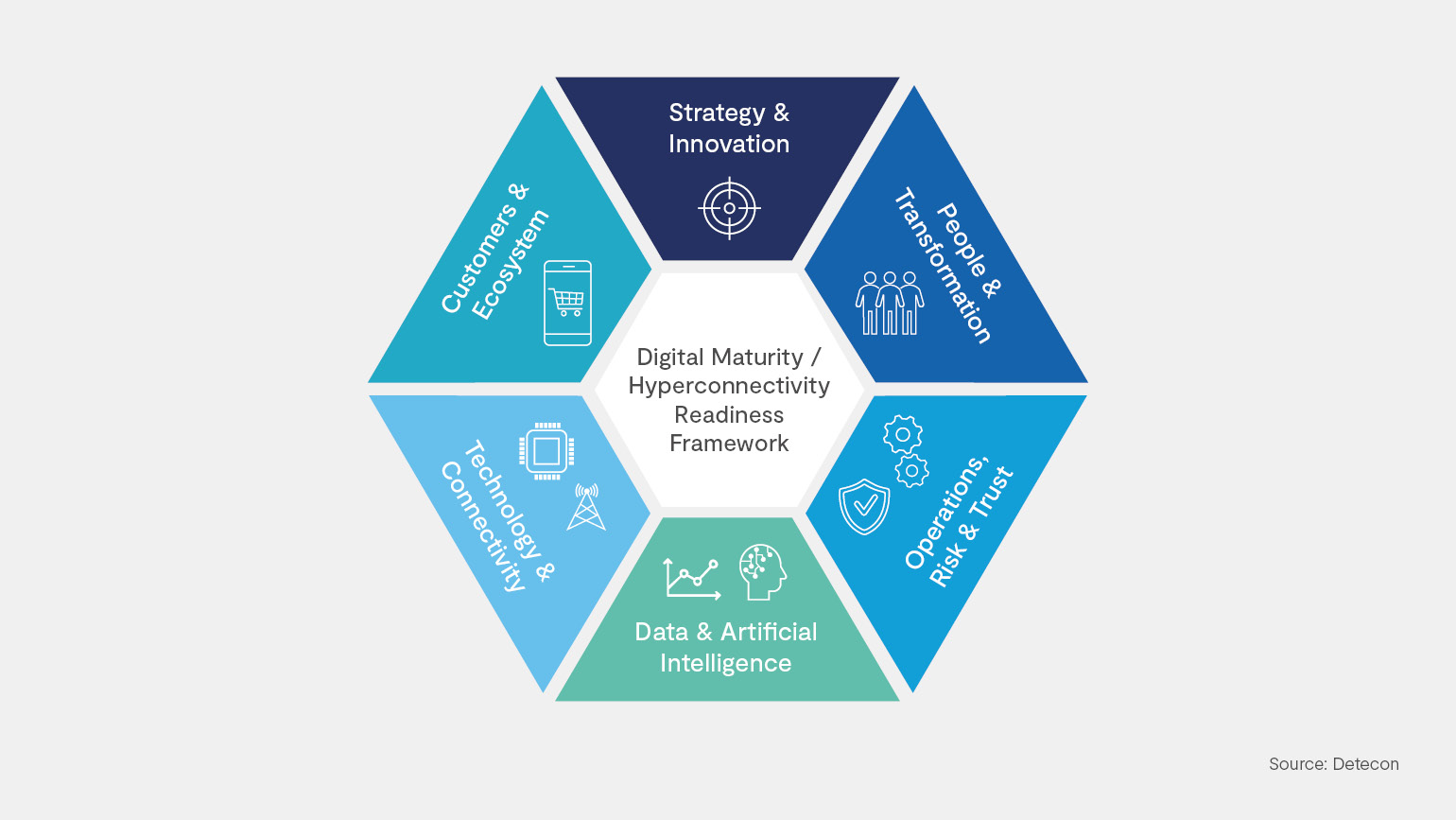In today's rapidly changing and connected world, Hyperconnectivity has become a crucial factor in driving emerging technologies, fostering innovation, shaping new ways of working, and setting trends. To thrive in this rapidly evolving landscape, businesses must embrace innovative approaches to harness the power of hyperconnectivity. The Detecon Hyperconnectivity Readiness Framework (HCRF) provides the basis for this.
Recognizing this need, Detecon has developed the Hyperconnectivity Readiness Framework (HCRF), a holistic industry-independent model that enables organizations to navigate the complexities of hyperconnectivity effectively. To achieve this, the model adopts a multidimensional perspective, introducing a sandwich approach within the model, which consists of three interconnected layers: business, society and technology environments.

The Hyperconnectivity Readiness Framework builds upon the success of the Digital Maturity Model (DMM), a well-established framework developed by Detecon in collaboration with industry players and the TM Forum in 2016. With a wealth of benchmarking data and insights from the DMM, the new Hyperconnectivity Readiness Framework benefits from Detecon’s proven track record of guiding organizations through their digital transformation journeys.
The structure of the HCRF
The HCRF was designed to provide flexibility in adapting to various environments, contexts and use cases.

At its core, the HC Readiness Framework comprises of six dimensions, which are the fundamental elements of any business, namely “Strategy & Innovation”, “Customer & Ecosystem”, “Technology & Connectivity”, “Data & AI”, “Operations, Risk & Trust”, and “People & Transformation”. The model provides clear definitions for each dimension in the context of hyperconnectivity, establishing a common understanding and effective collaboration between Detecon and its clients.
Diving deeper, the framework further breaks down the six dimensions into 6x6 sub-dimensions, allowing for a more detailed analysis. Each subdimension is linked to concrete improvement methods, tools, and Key Performance Indicators. To measure progress within each subdimension, a Likert scale with five levels, ranging from "does not apply" to "strongly agree," is applied. This scaling method is widely used due to its intuitive interpretation and its ability to ensure accurate and high-quality data collection.
Assessment Carry-out
Detecon follows a structured three-step approach to conduct the HCRF assessment, allowing for a comprehensive analysis of the current state and potential future developments.

During the initial step, Detecon establishes a shared comprehension among stakeholders, ensuring alignment on prerequisites and project scope. The organization's hyperconnectivity as-is maturity level is then assessed via an online tool.
Detecon’s team of subject matter experts undertakes in the following step a comprehensive gap analysis, benchmarks the organization's hyperconnectivity and digital performance against industry peers and conducts immersive workshops
Finally, in step three, Detecon helps develop a transformation roadmap, prioritizes action items, and provides tangible insights. The aim is to increase the hyperconnectivity maturity and operational efficiency in order to reach the desired to-be state.

Detecon emphasizes the importance of linking assessment outcomes to subsequent transformation initiatives with our team, ensuring seamless continuity and effective progress.







